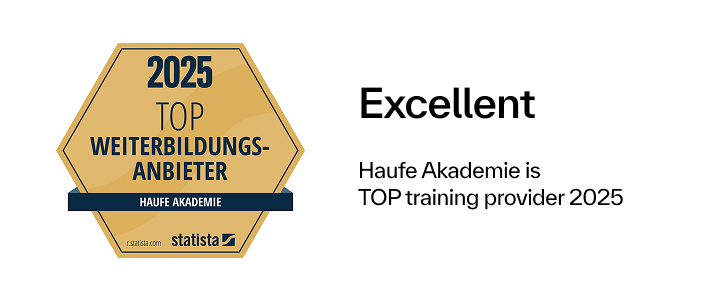Materiality analysis for SMEs
Systematically prioritize and strategically manage sustainability issues

- Common basis and central concepts of the materiality analysis.
- Double materiality within the meaning of the Corporate Sustainability Reporting Directive (CSRD).
- Current developments through the Omnibus initiative.
- The materiality analysis as a possible basis for sustainability activities and the VSME standards for SMEs.
- Importance of internal & external participation.
- Big picture: Process steps of a materiality analysis.
- Strategic added value for companies.
- The basic analysis.
- Derivation of company-specific topics based on the analysis.
- Stakeholder mapping.
- Cross-industry topics of the CSRD: the so-called AR16 list.
- Inside-Out & Outside-In: the main perspectives and their evaluation criteria according to CSRD.
- Correct identification of key areas of activity according to CSRD.
- Stakeholder participation, incl. excursus: the AA1000SeS as an important basis for stakeholder participation.
- Integration of current developments and expected clarifications from the omnibus procedure.
- Finalization of the results of a materiality analysis: Proposal for the design of a final workshop.
- Tips for preparing the results, e.g: Materiality matrix.
- Outlook for the next steps: The "IROs" and the GAP analysis.
- Interaction between external and internal interface partners during implementation.
- Special challenges in implementation.
- Selected practical examples & discussion.
Contents
Module 1
- Common basis and central concepts of the materiality analysis.
- Double materiality within the meaning of the Corporate Sustainability Reporting Directive (CSRD).
Current developments through the Omnibus initiative.
The materiality analysis as a possible basis for sustainability activities and the VSME standards for SMEs.
- Importance of internal & external participation.
- Big picture: Process steps of a materiality analysis.
- Strategic added value for companies.
- The basic analysis.
Module 2
- Derivation of company-specific topics based on the analysis.
- Stakeholder mapping.
- Cross-industry topics of the CSRD: the so-called AR16 list.
- Inside-out & outside-in: the main perspectives and their evaluation criteria according to CSRD.
- Correct identification of key areas of activity according to CSRD.
- Stakeholder participation, incl. excursus: the AA1000SeS as an important basis for stakeholder participation.
- Integration of current developments and expected clarifications from the omnibus initiative.
Module 3
- Finalization of the results of a materiality analysis: Proposal for the design of a final workshop.
- Tips for preparing the results, e.g: Materiality matrix.
- Outlook for the next steps: the "IROs" and the GAP analysis.
- Interaction between external and internal interface partners during implementation.
- Special challenges in implementation.
- Selected practical examples & discussion.
Learning environment
In your online learning environment, you will find useful information, downloads and extra services for this training course once you have registered.
Your benefit
- You will learn about the framework and the overarching objective of the materiality analysis.
- You will receive an overview of current developments at European level (EU Omnibus Initiative).
- You understand the interaction and dependencies of the different process steps.
- You know the individual process steps and can take the requirements of the CSRD into account when planning a materiality analysis.
- You will get to know the internal process dependencies and will be able to independently manage the implementation of a materiality analysis and lead it to a good result.
- You find out who your relevant interface partners and data providers are and can include them in the materiality analysis process in a profitable way.
- You will gain an overview of the current adaptation discussions at EU level and can incorporate these into your planning.
Methods
Trainer input, group exercises, best-practice examples, work aids and checklists, discussion, exchange of experience.
Recommended for
The training is aimed at anyone who is faced with the challenge of planning and carrying out a materiality analysis in their company. It is particularly aimed at sustainability managers with process responsibility and managing directors of small and medium-sized enterprises (SMEs).
Further recommendations for "Materiality analysis for SMEs"
Start dates and details



 4.5
4.5




